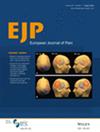Short-Term Effects of Kinesio Taping on Pain and Functionality in Patients With Cervical Spine Surgery
Abstract
Background
Effective postoperative pain management following cervical spine surgery is essential for optimal recovery. This study was conducted to determine the short-term effects of Kinesio Taping (KT) on pain and functionality in patients undergoing cervical spine surgery.
Methods
Ninety patients diagnosed with cervical disc herniation, cervical stenosis or cervical spondylolisthesis who underwent posterior cervical spine surgery were randomly assigned to three groups: Group I (conventional rehabilitation [CR] + KT, n = 30), Group II (CR, n = 30) and Group III (KT, n = 30). The Visual Analogue Scale (VAS), pressure pain threshold (PPT), range of motion (ROM), Neck Pain and Disability Scale (NPAD), Upper Extremity Functional Index-15 (UEFI-15) and short form-36 (SF-36) were assessed at baseline, on the first and third days after intervention, and after the follow-up period.
Results
Statistically significant difference in mean changes across all scores was observed among the three groups, favouring the CR + KT group (p < 0.001). CR + KT intervention significantly improved VAS, PTT, NPAD and SF-36 emotional scores after treatment, with improvements maintained at 2-week follow-up (p < 0.001). In terms of treatment interaction, CR + KT intervention showed a significantly larger effect size on PPT and NPAD scores (p < 0.001). CR + KT and CR groups demonstrated similar improvements in functionality (p > 0.05).
Conclusion
Integrating KT into a CR programme during the early postoperative phase of cervical spine surgery may improve clinical outcomes, specifically in pain intensity, PPT, disability levels and emotional components. However, the addition of KT to the CR programme does not appear to provide any meaningful benefits in terms of functionality compared to the CR programme alone.
Significance
This study reveals that integrating the KT method into the CR programme during the early postoperative period after cervical spine surgery can serve as a supportive and complementary intervention, particularly for painful conditions.

 求助内容:
求助内容: 应助结果提醒方式:
应助结果提醒方式:


